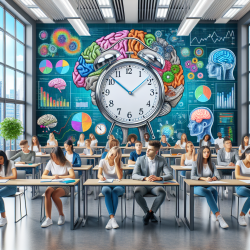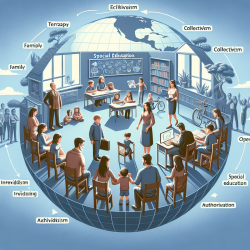In the ever-evolving landscape of education, understanding the science behind optimal cognitive functioning can be a game-changer for educators and students alike. A recent study titled Identifying the Best Times for Cognitive Functioning Using New Methods: Matching University Times to Undergraduate Chronotypes, provides compelling insights into how aligning educational schedules with students' natural cognitive peaks can significantly enhance learning outcomes and overall well-being.
The Science of Chronotypes and Cognitive Peaks
The study explores the concept of chronotypes—individual differences in circadian rhythms that dictate our optimal times for various activities, including learning. By utilizing both survey-based empirical models and neuroscience-based theoretical models, researchers identified that much later start times (after 11 a.m. or 12 noon) are optimal for university students. This finding aligns with the natural shift in sleep patterns during adolescence and early adulthood, where wake and sleep times naturally occur 2–3 hours later than in childhood.
The implications of this research are profound. Traditional early start times in educational institutions often misalign with students' biological clocks, leading to chronic sleep deprivation. This misalignment not only impairs academic performance but also increases health risks such as obesity, depression, and substance abuse.
Practical Applications for Educators
For educators looking to implement these findings, here are some practical steps:
- Advocate for Later Start Times: Engage with school administrators and policymakers to discuss the benefits of later start times. Highlight how such changes could improve academic performance and student well-being.
- Create Flexible Learning Schedules: Where possible, offer flexible class schedules that allow students to choose learning times that align with their chronotypes.
- Promote Sleep Hygiene: Educate students about the importance of good sleep hygiene practices, such as reducing screen time before bed, to complement the benefits of adjusted start times.
- Encourage Further Research: Stay informed about ongoing research in this area and consider conducting your own studies to tailor scheduling practices to your specific student population.
The Path Forward
The evidence supporting later start times is robust and growing. While change may be slow due to logistical challenges and traditional mindsets, the potential benefits make it a worthwhile pursuit. By aligning educational schedules with students' natural cognitive rhythms, we can create an environment where students not only perform better academically but also thrive physically and emotionally.
This research invites educators to rethink traditional approaches and consider innovative solutions that prioritize student health and performance. As we continue to explore these possibilities, let us remain committed to creating educational systems that reflect the best of what science has to offer.
To read the original research paper, please follow this link: Identifying the Best Times for Cognitive Functioning Using New Methods: Matching University Times to Undergraduate Chronotypes.










